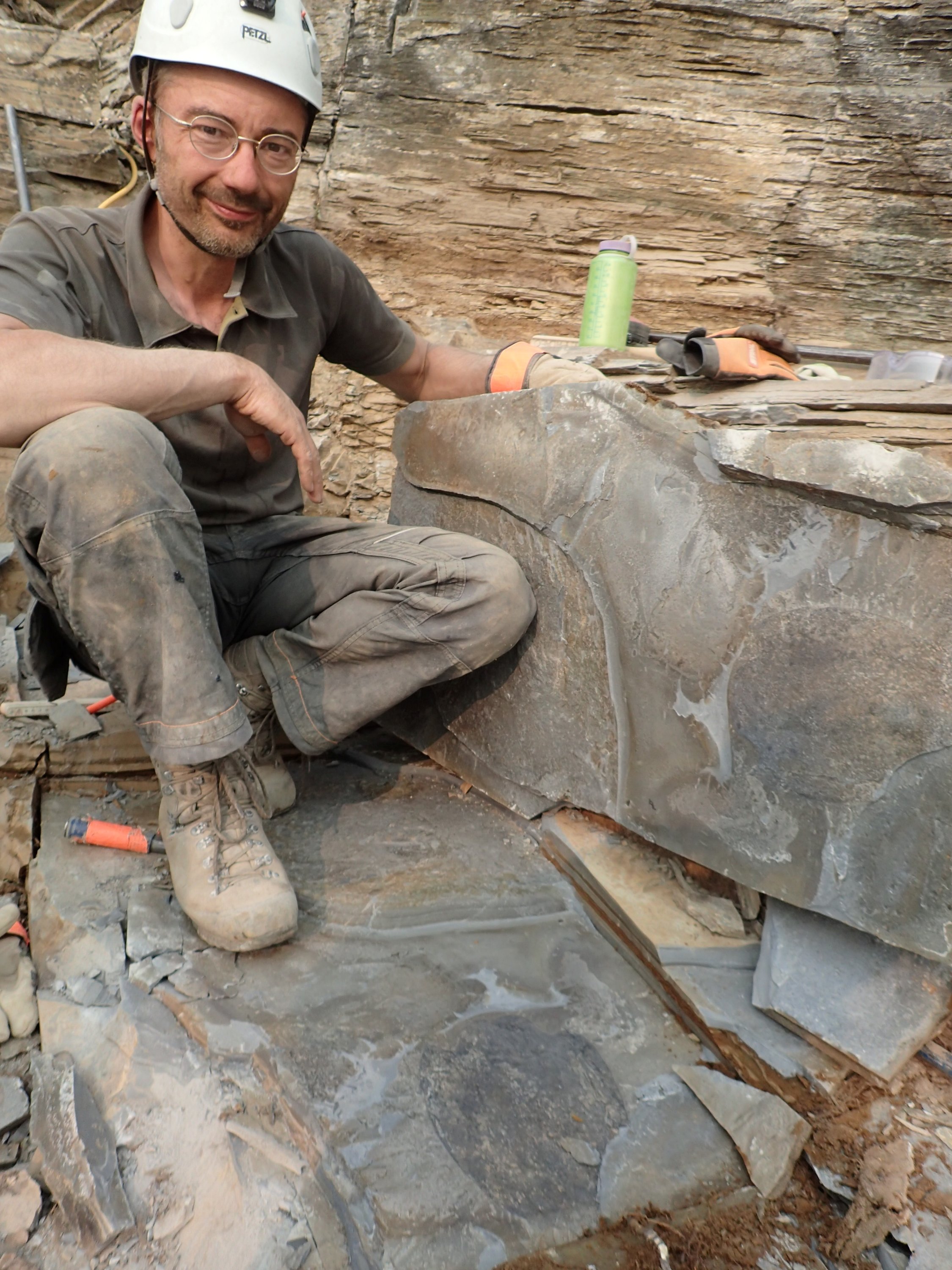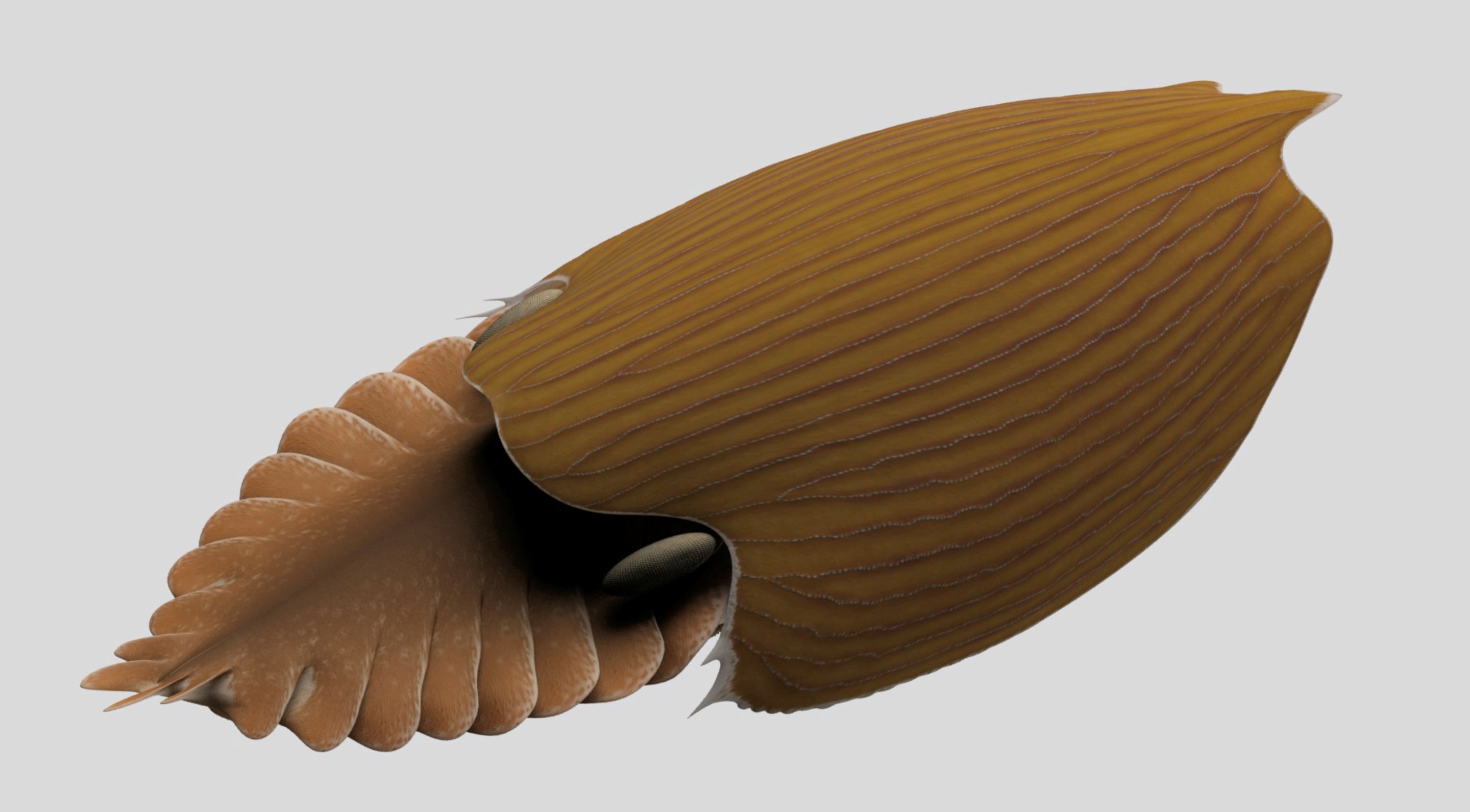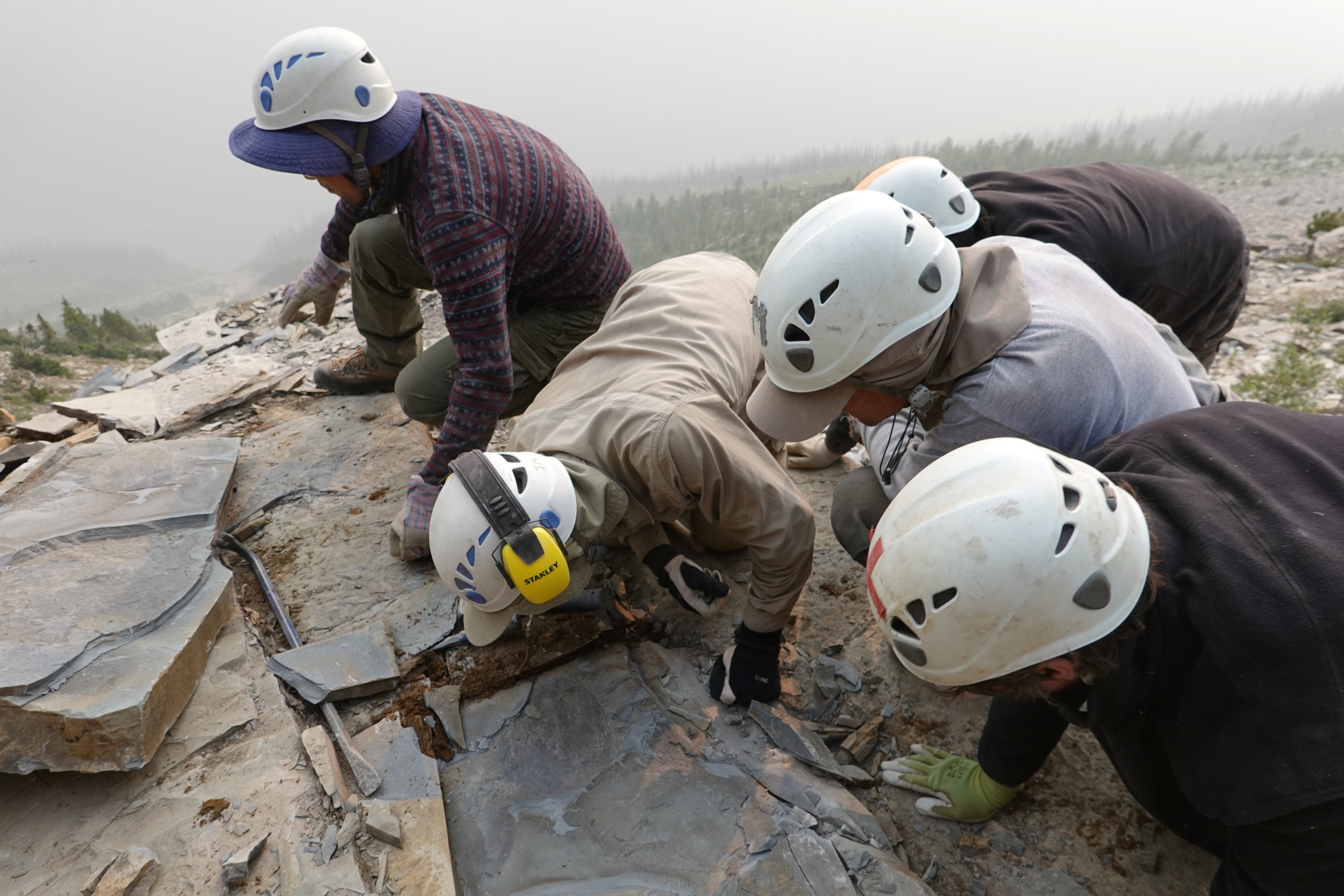© Turkuvaz Haberleşme ve Yayıncılık 2025
Exciting news for scientists emerged from Canada recently when the fossil of a strange marine creature whose body resembled a science-fiction spacecraft was discovered. Dubbed “the mothership,” it thrived in tropical seas about 506 million years ago, at the time boasting the title of one of Earth's largest predators.
Scientists on Wednesday announced the discovery of fossils of a Cambrian Period arthropod named Titanokorys gainesi in Kootenay National Park in the Canadian Rockies, within a vast rock formation called the Burgess Shale.

The name Titanokorys means "titanic helmet," and for good reason. This creature's head carapace represented about two-thirds of its body length of roughly 20 inches (50 centimeters). While that may not sound big by modern standards, during the Cambrian Period – a pivotal juncture in the history of life on Earth – it was a giant.
"Most other life forms were smaller than a human thumbnail at that time. By comparison, Titanokorys was longer than an adult human forearm. Yes, it was a giant dude," said paleontologist Jean-Bernard Caron of the Royal Ontario Museum in Toronto, lead author of the study published in the journal Royal Society Open Science.
Titanokorys boasted multifaceted eyes, a circular mouth studded with triangular tooth-like structures, two spiny rake-like claws to capture prey, feather-like gills and a series of flaps on the sides of its body for swimming.
"Overall, the animal looked torpedo-shaped and was relatively flat, an adaptation to living along the sea floor. It could be compared to a giant swimming head since the body was so short – very bizarre-looking beast indeed," Caron said.

It lived at a time when most of North America was below tropical seas.
"When the carapace fossils were first discovered, they were so unusual looking that we weren't initially sure what sort of animal they belonged to," said paleontologist and study co-author Joe Moysiuk of the University of Toronto and the Royal Ontario Museum.
"In the field we nicknamed them 'the mothership,'" Moysiuk added. The nickname “spaceship” was given to a smaller cousin also found in the Burgess Shale, a treasure trove of Cambrian fossils.
Scientists discovered partial fossils of at least a dozen Titanokorys individuals in British Columbia between 2014 and 2018.
Arthropods are an expansive group including insects, spiders and crustaceans such as crabs and lobsters. They are invertebrates with exoskeletons, segmented bodies and jointed appendages. Its large head carapace makes Titanokorys resemble modern horseshoe crabs, though they represent different arthropod lineages.

It was during the Cambrian Period, from about 542 million to 488 million years ago when many major animal groups first burst onto the scene. The relatively short span of time in which this unfolded inspired the term “Cambrian Explosion.”
Titanokorys is a member of an arthropod lineage called radiodonts that lasted from about 520 million years ago to about 390 million years ago. Another radiodont was Anomalocaris, perhaps the largest Cambrian predator, reaching about 3 feet (1 meter) long.
Spines on the grasping appendages of Anomalocaris were adapted to spear or grab sizable prey, differing from Titanokorys.
Titanokorys apparently fed on buried prey like worms, using its claws to stir up the mud and strain out any morsels. Its claws were adapted not to grasp prey but to bring food toward its mouth.
"Titanokorys may have swum something like a modern stingray, undulating the flaps along the side of its body," Moysiuk said.
